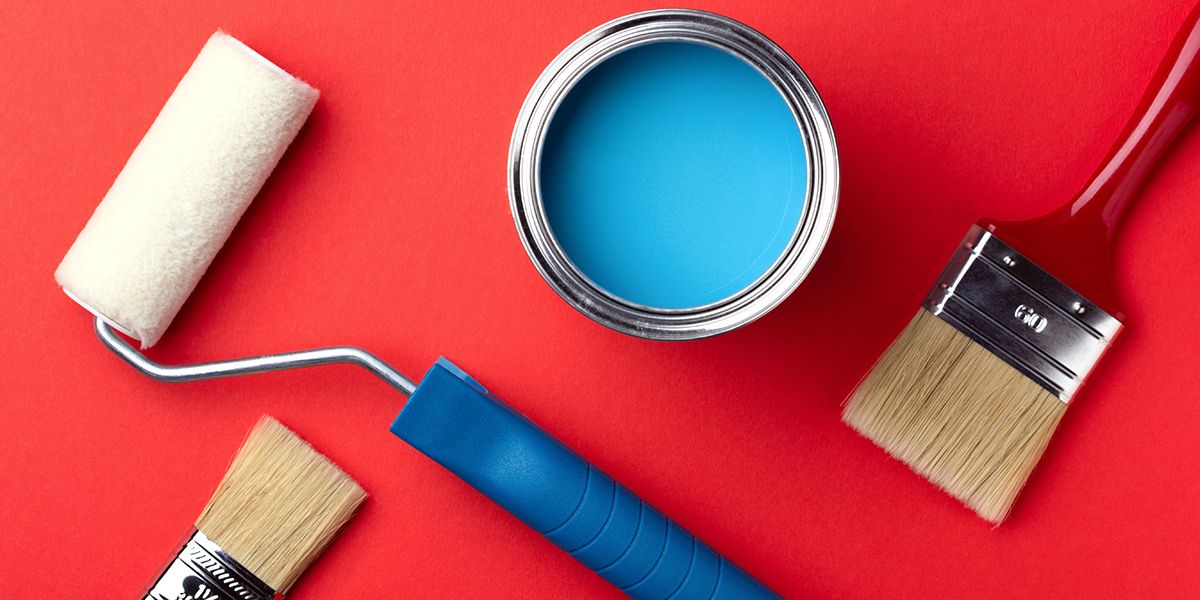
What Is the Major Difference Between Interior and Exterior Paint?
While interior and exterior paint enhance the beauty of our homes, each has a different purpose. Many homeowners often ask, “What is the difference between interior and exterior paint?” A good exterior paint, essential for any home exterior paint design, will withstand weather conditions and resist mold, fading, and cracking.
In comparison, interior paint offers stain-resistant properties that allow regular cleaning without causing damage. Nelson J. Greer Painting Contractors, Inc. has reliable painters in Tucson ready to work on your next paint project. We paint interior and exterior surfaces with precision and high-quality materials.
Basics of Interior and Exterior Paint
Interior and exterior paints have four basic components: solvents, pigments, resin, and additives.
- Solvents: A paint’s base or solvent consists of oil- or water-based materials. Oil-based paints are better suited for exterior paint jobs, while water-based paints work on the interior and exterior.
- Pigments: These play an important role by giving paint their color. Materials sourced for pigments come from plants, minerals, animals, or synthetic production.
- Resin: Paint requires resin in the form of epoxy, silicone, or acrylic. Resin provides strength for exterior paints to withstand outdoor elements.
- Additives: These improve the appearance and performance of the paint. Additives offer special characteristics that make the paint more durable, waterproof, or UV resistant.
Differences Between Interior and Exterior Paint
Now that you understand the basics of paint, let’s look at how these two types differ.
1. Binding Resin
Binding resin determines how well paint adheres to a surface. Exterior paints use acrylic resin, which offers the strongest bond and durability. The difference between interior and exterior paint involves the epoxy or silicone resin used for interior paints.
2. Type of Pigments
Interior paints use organic-based pigments without any harsh chemicals. These paints do not produce harmful odors and provide a safe indoor environment. In contrast, exterior paints use harsh chemicals and non-organic pigments to protect the paint from fading.
3. Special Additives
Since interior paints do not have to withstand tough environments, they require fewer additives. Exterior paints include special additives to prevent chipping, peeling, and cracking. Others, such as mildewcides, protect exterior paint from mold, mildew, and algae.
4. Durability
Weather-resistant exterior paint can withstand years of abuse. The paint will not easily chip when it comes into contact with twigs, bugs, or debris. In most cases, exterior paint provides more durability than interior paint.
5. Scratch Resistance
Interior and exterior paints offer good scratch resistance. Interior latex paint can withstand scuffs, dings, scratches, and tough scrubbing. However, exterior paint offers more overall scratch resistance than interior paint.
Choose an Experienced Painting Company
Nelson J. Greer Painting Contractors, Inc. has experienced painters who take the time to ensure you get the best-finished product with straight lines, no messes, and uniform coatings. We offer a free consultation to guide you through the paint selection process. Visit us to learn more about commercial painting jobs in hot weather.
Do you need more information on the difference between interior and exterior paint? Contact Nelson J. Greer Painting Contractors, Inc. today to get your home, business, or new construction project painted. Call us at (520) 325-5800.
Categories
- Church Painting (1)
- Commercial Painting (12)
- Exterior Painting (4)
- Interior Painting (2)
- FAQ (1)
- Floor Coating & Sealing (1)
- General (13)
- Industrial Painting (1)
- Metal Painting (1)
- Paint Prep (3)
- Painting Contractors (4)
- Pool Deck Epoxy (1)
- Residential Painting (32)
- Baseboards & Trim (2)
- Cost (3)
- Exterior Painting (8)
- Interior Painting (7)
- Tips (2)
- Walls (6)
- Roof Replacement (1)